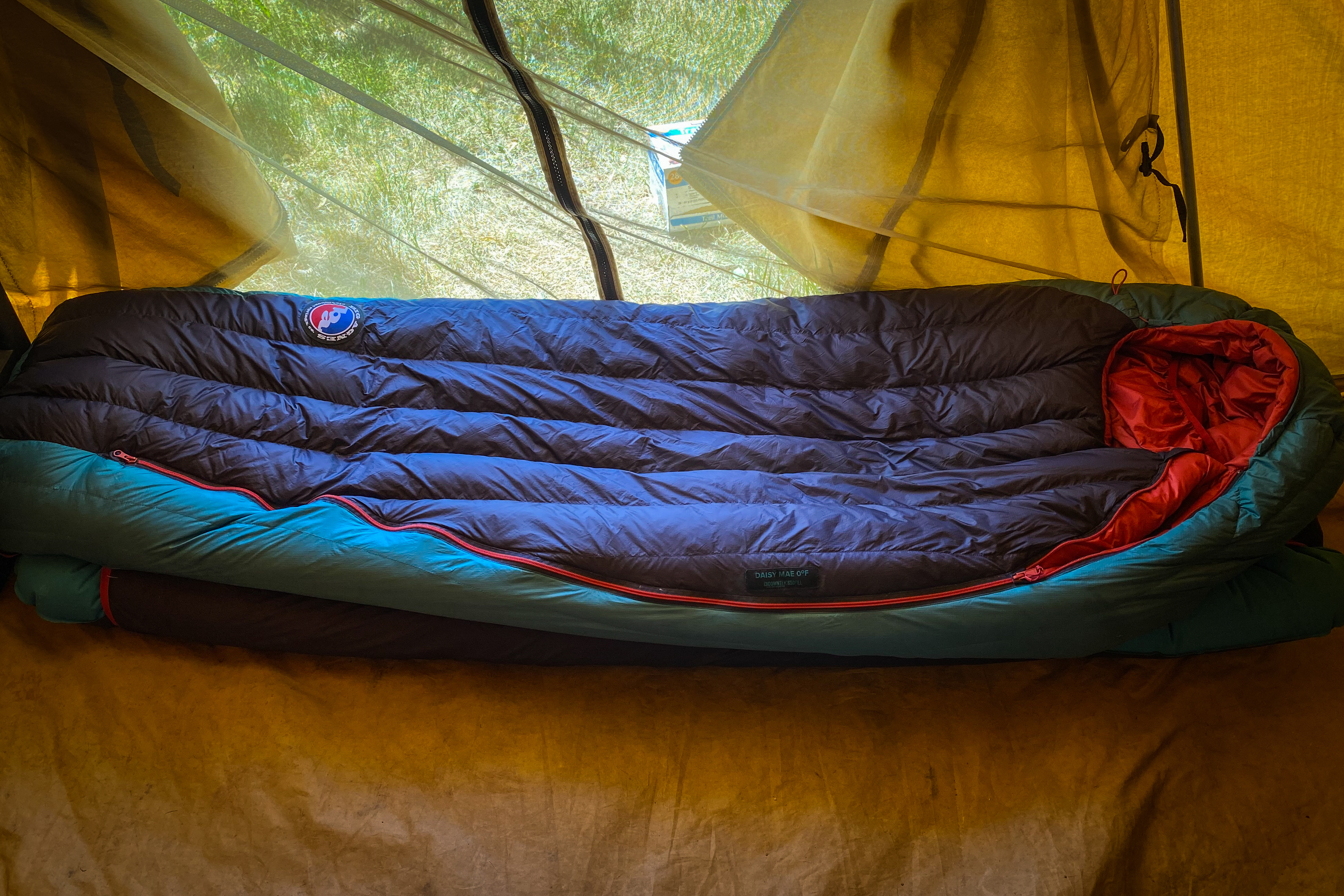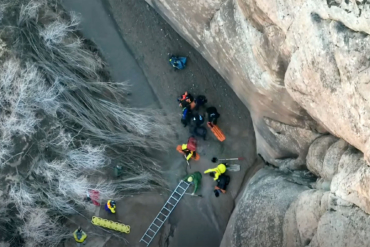I love to share my gear — I dole it out like candy. I have a lot of it and am always giddy about spreading the love.
And then this happens. And suddenly, I have to learn how to remove mold from my outdoor gear. I allow the hate to flow freely and lean into the dark side.
Which is what you’ll need to get mold out of a sleeping bag; that, and a little bit of chemistry. Read on to learn from my anger-fueled foray into removing mold from a sleeping bag, sleeping pad, and more.
My Unexpected Journey Into Mold Remediation
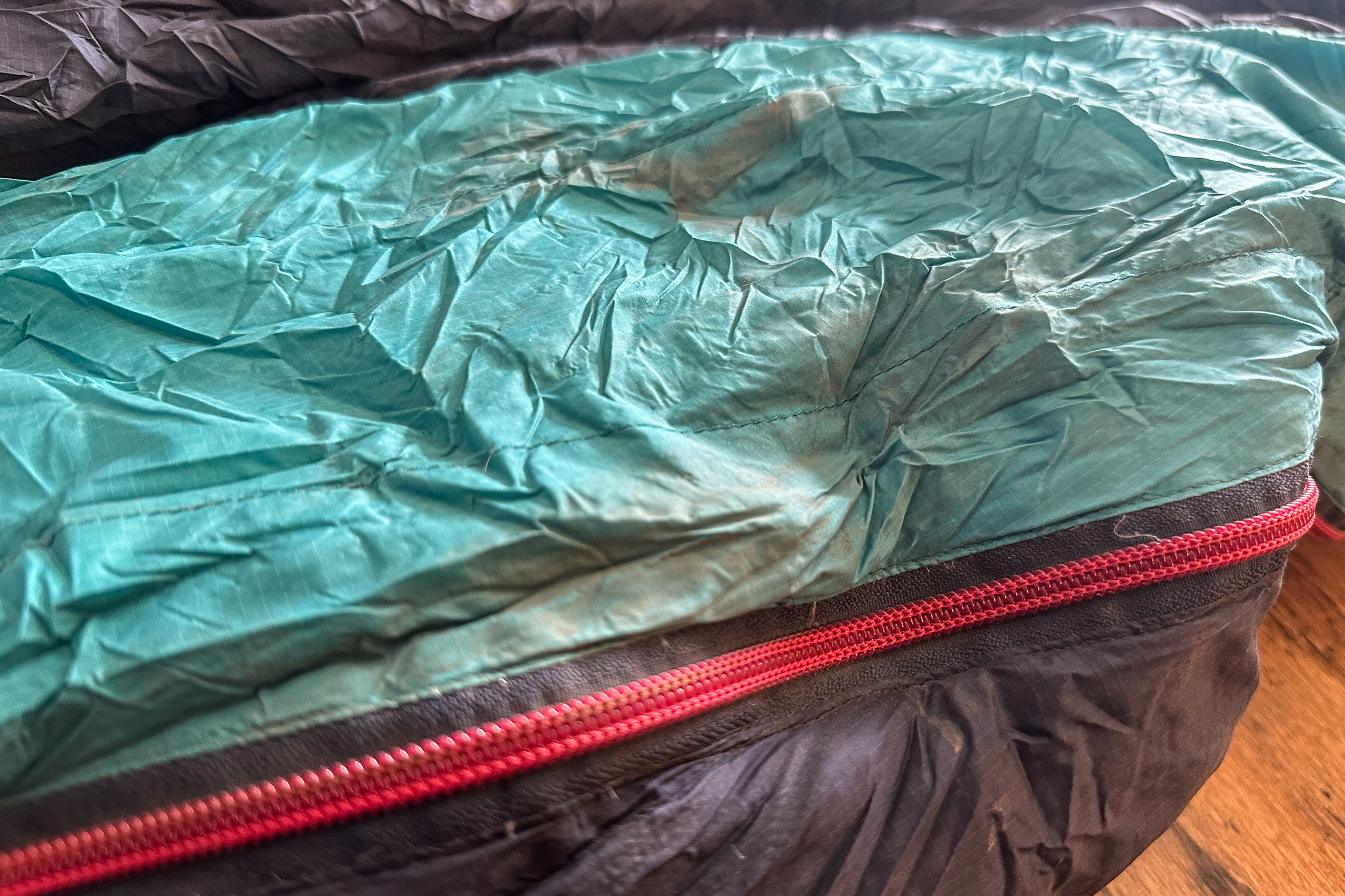
I was packing for the airport, getting ready to spend a solid 4 days sleeping in the desert, when I grabbed my old faithful sleeping bag setup. For some reason, I decided to pull it out and take a peek to make sure all the parts and pieces were accounted for, including my pad, pillow, and inflation sack.
Pro tip: Never trust that people put things back where they found them. It will leave you missing the parts you likely need most.
That’s when a cloud of mold smacked me in the face with a light but violent force. The entire sleeping bag, pad, pillow, and stuff sack were a speckled roll of mold.
After my brain dove into the archives to figure out who I was going to have to beat with a shovel for packing away my gear wet, I fought off the instinct to throw it out and instead decided to try and save this sleep system. As far as gear goes, it really does mean a lot to me.
But how do you get rid of mold on a down sleeping bag? The internet is rife with opinions ranging from, “Don’t bother, just throw it out,” to “MORE BORAX!”
Come along with me on the journey I embarked upon to save my favorite sleep system from the ravages of mold.
WARNING: I am violating all the care instructions and recommendations of my sleeping bag’s manufacturer. I am also taking a risk by choosing to treat and possibly cuddle with mold spores. You may absolutely destroy your sleeping bag following these methods. You may wreck your washing machine. You’ll definitely hurt your pride. Proceed at your own risk. You have been warned.
How to Clean Mold From a Sleeping Bag

To preface, this gear tragedy did not just befall my favorite sleeping bag but an entire sleep system I’d built up and invested in.
This is not even my best sleeping bag. Heck, it isn’t my warmest or most comfortable. It’s a great sleeping bag and pad, but not my best one. It’s more than that to me — it’s sentimental.
This is the first purchase my partner and I bought together. We both ordered a full Big Agnes sleep system so that we could adventure together.
It was money I didn’t have to spend at the time, but I spent it anyway.
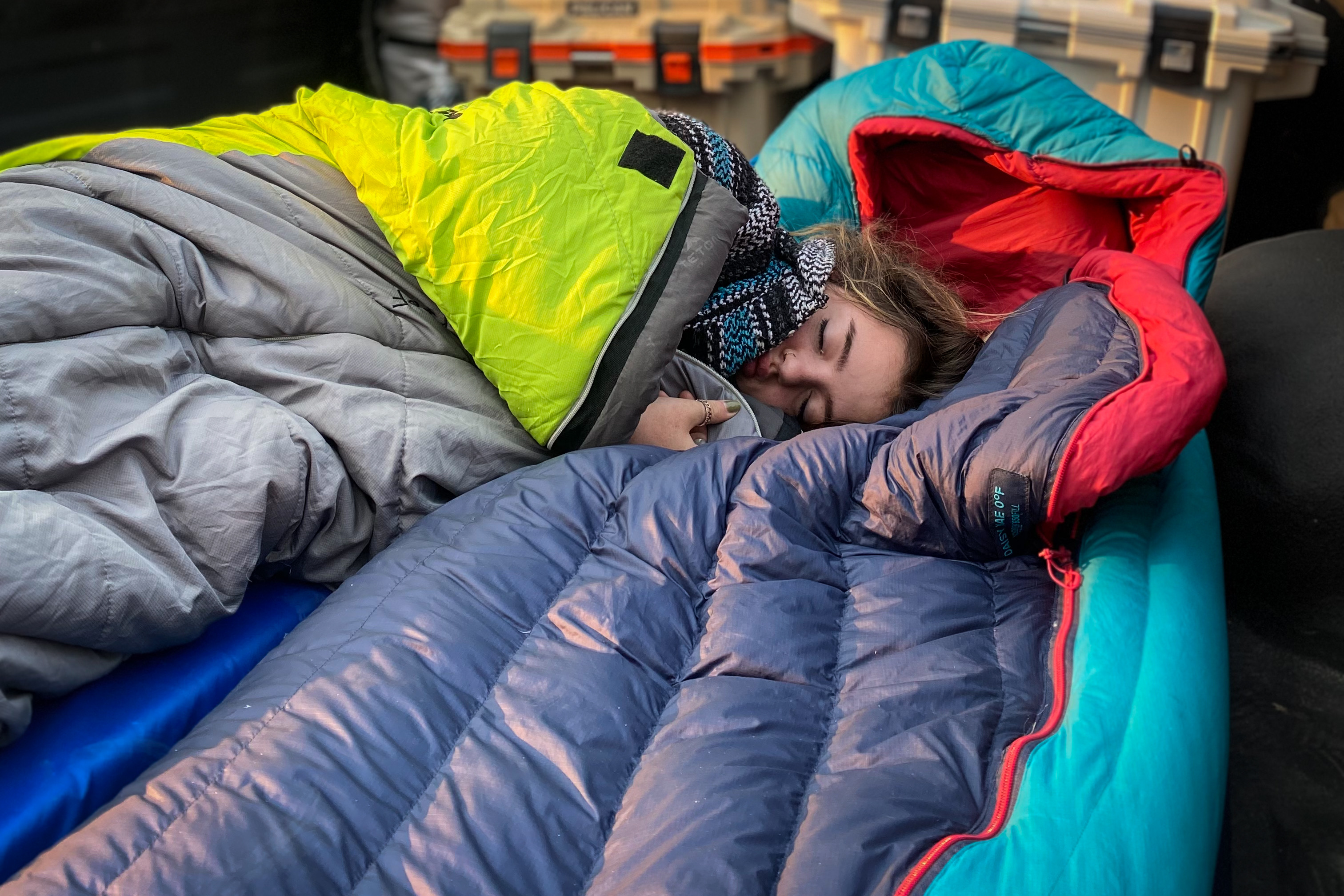
Here’s what I was trying to save:
- Big Agnes Women’s Daisy Mae 0-Degree Sleeping Bag
- Insulated Q-Core Deluxe Sleeping Pad
- Trekology Inflatable Pillow
Step 1: Cry
Take your time.
Step 2: Decide If Your Moldy Gear Is Too Far Gone
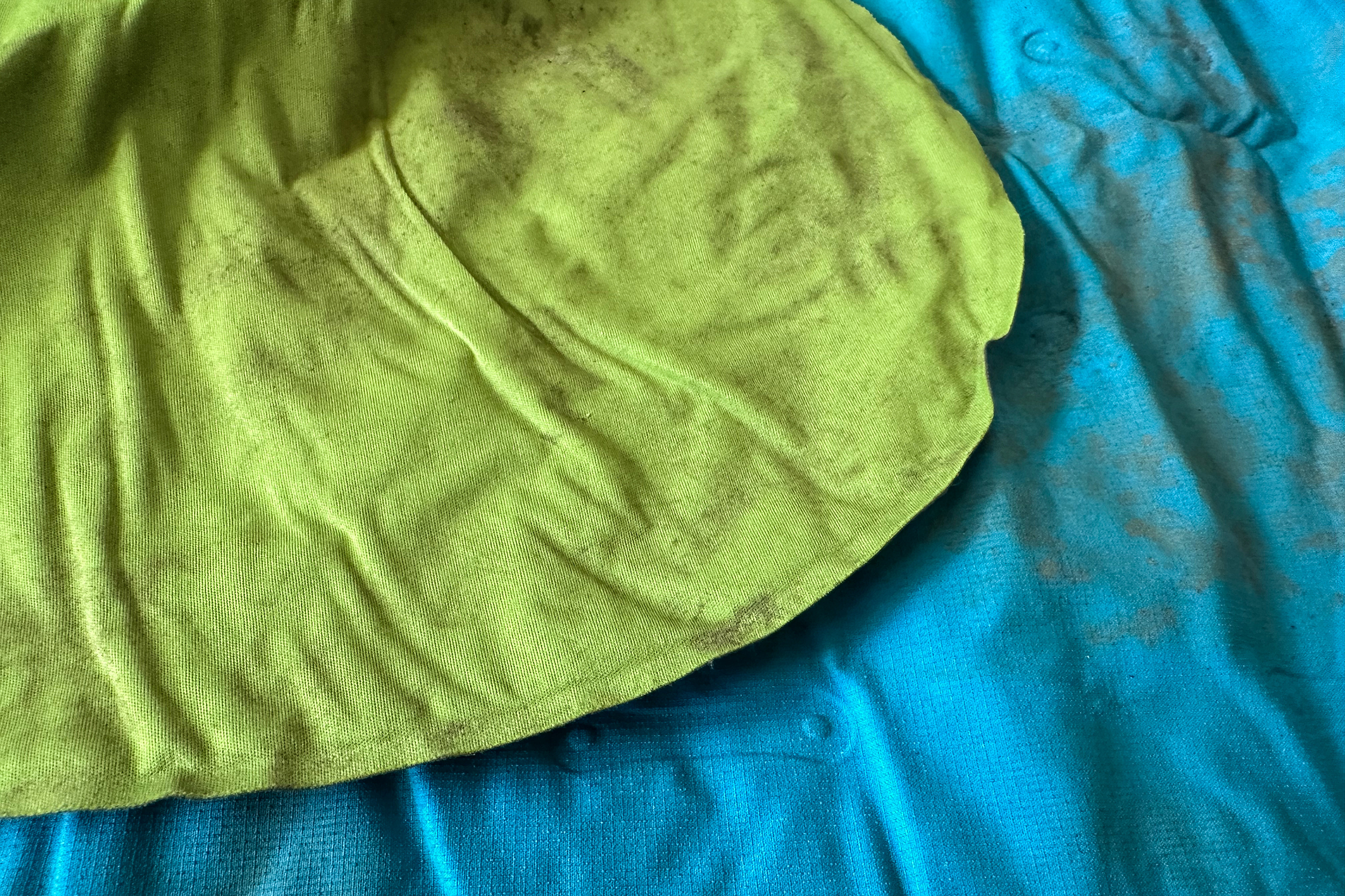
This is one of those vital steps. Is your bag too far gone? Is dealing with mold something you’re willing to risk? Do you have concerns about even being around the bag in an attempt to save it? Will you ever feel comfortable breathing the air poofed out of your bag again?
And, importantly, is your bag down or synthetic?
Mold is not a joke. Depending on the type of mold, you could risk dealing with some serious health implications.
My rule with mold has almost always been: Toss it! This isn’t just because my health is important to me. Let’s be honest; I’ve made far more detrimental health choices than fiddling with a bit of fungus.
However, I don’t do that mildewy moldy smell. Nope. It doesn’t matter how faint it is. I hate that smell and refuse to cuddle up with it.
That being said, if you’re going to end up tossing the thing anyway and have the basic supplies, time, and willingness to try, you really have nothing to lose.
Step 3: Gather Mold-Wrecking Supplies
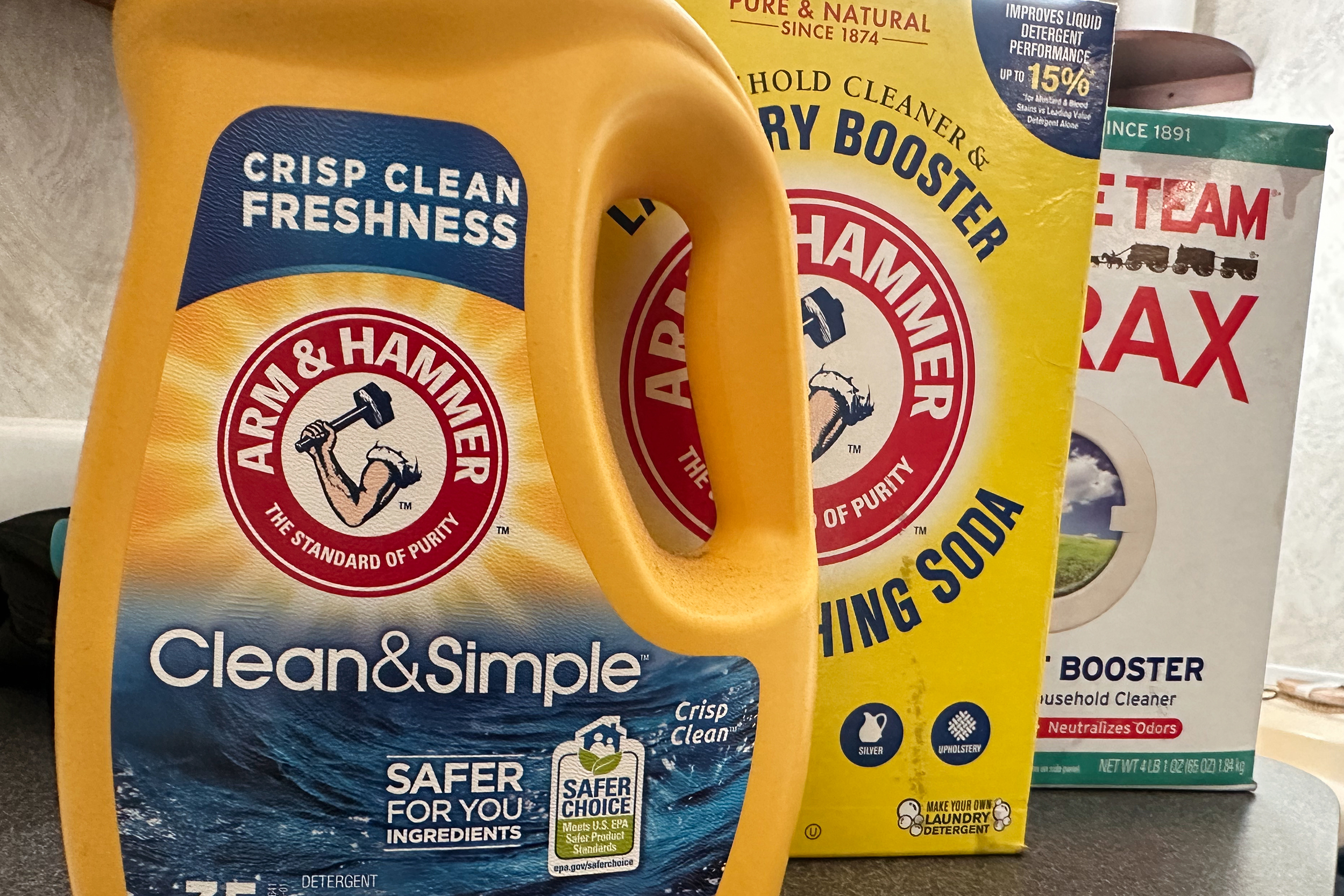
First things first: There are countless guides with thorough instructions about washing sleeping bags. This is one of those tasks I assume you, as a sleeping bag owner, likely don’t do nearly often enough. I know I don’t.
Synthetic bags are easier to care for. Just wash them. Then dry them.
Down sleeping bags, on the other hand, offer a bit more of a washing struggle.
My favorite little rundown of how to properly care for your down bag happens to be the incredible “How to Wash a Down Sleeping Bag” guide by GearJunkie’s own Sean McCoy.
It includes tips and tricks for using the proper washing medium, like Nikwax Down Wash Direct, and making sure you’re using the right washing machine and drying methods.
These are valuable lessons for everyday life. But once mold appears, we are beyond that.
There are loads of online forums and threads discussing if and how you can get mold out of a down bag. Prepare for the haphazard journey I chose.
Personal Protective Gear & Chemicals
We’re dealing with mold, so maybe mask up and grab a pair of gloves. Beyond that, I went with some online tips I found: borax, laundry booster, laundry soap, and vinegar.
Aside from that, I utilized my fanciest broom stir stick and a pair of rubber boots.
Let’s do this!
Step 4: Begin With a Soak
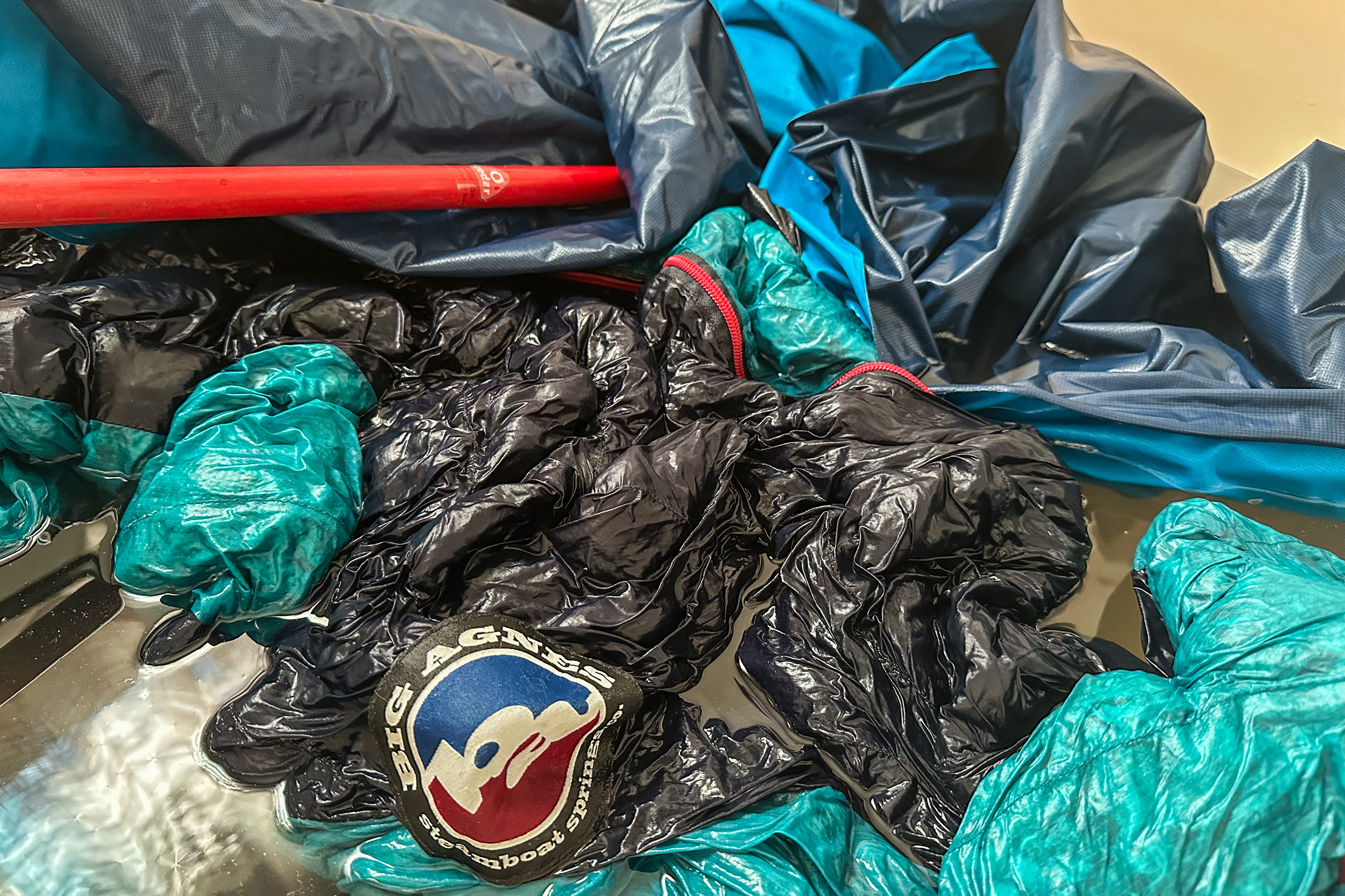
Here’s what I did:
- Fill your bathtub with the hottest water your little water heater can muster.
- While it fills, dump an irrational amount of borax, laundry soap, laundry booster, and vinegar in the water. I used a full cup of laundry soap and just shook the boxes of laundry booster and borax until the water took on a hazy look. For the vinegar, I went with the whole 16-ounce bottle.
- Add your sleeping bag and all the accessories. Don’t forget things like your stuff sack. That little bugger is a mold holder now.
- Grab your stirring stick. Mine was a broom. Yours might be a baseball bat or a hockey stick. We don’t judge.
- Stir that stew and squish all the materials until the air escapes and your gear is submerged.
- Let it simmer. I left mine overnight, about 12 hours.
The next morning, what you’ll likely find is a bit of shame and a lot of heavy material.
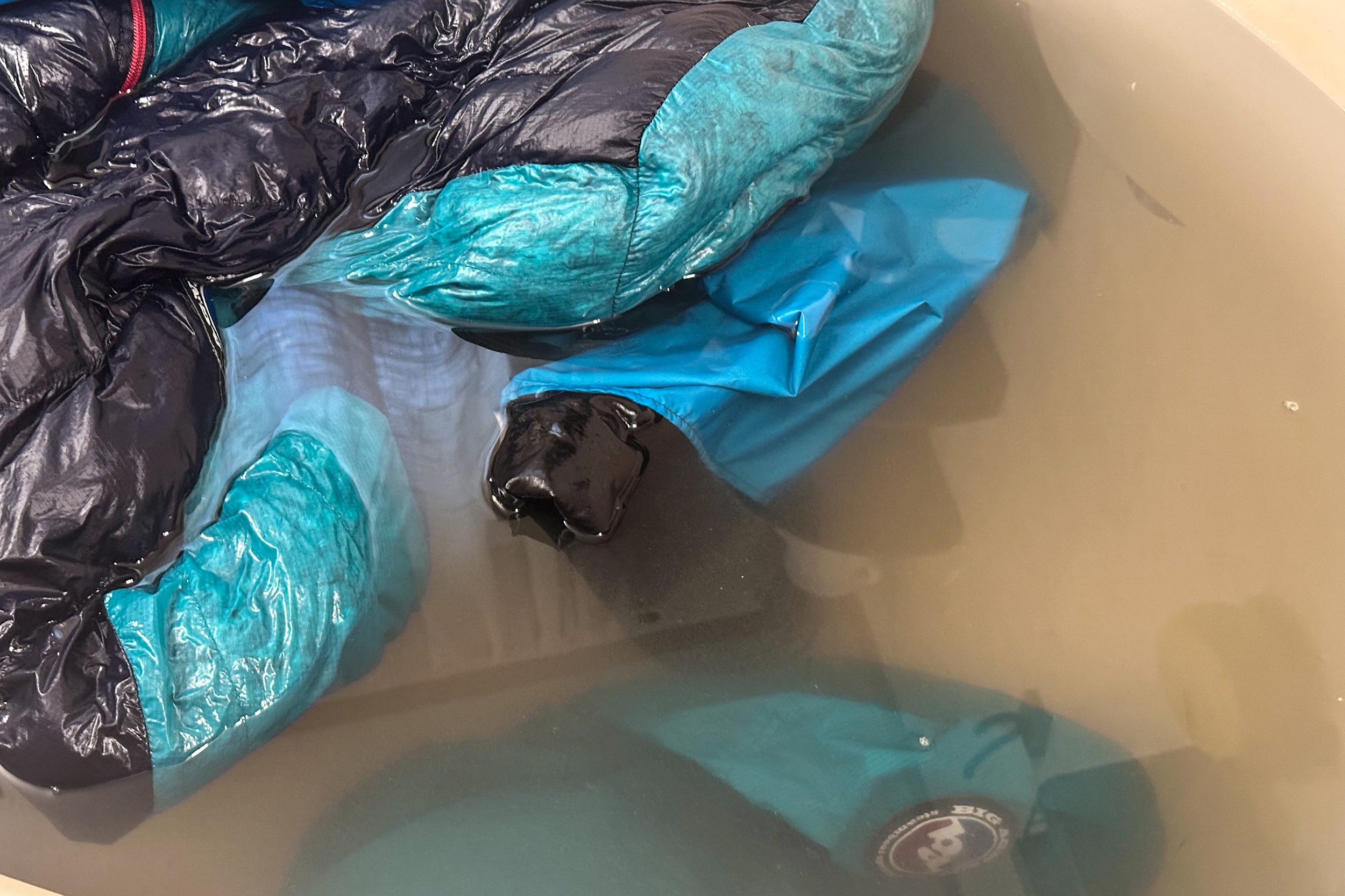
This is gross. I knew it would be gross, but I was unprepared for this level of filth. The water seemed to move as if it had gained some level of consciousness. I was disgusted. You probably will be, too.
At this stage, it’s time to drain the monsters and get to work.
Step 5: Squish Out the Nasty Water
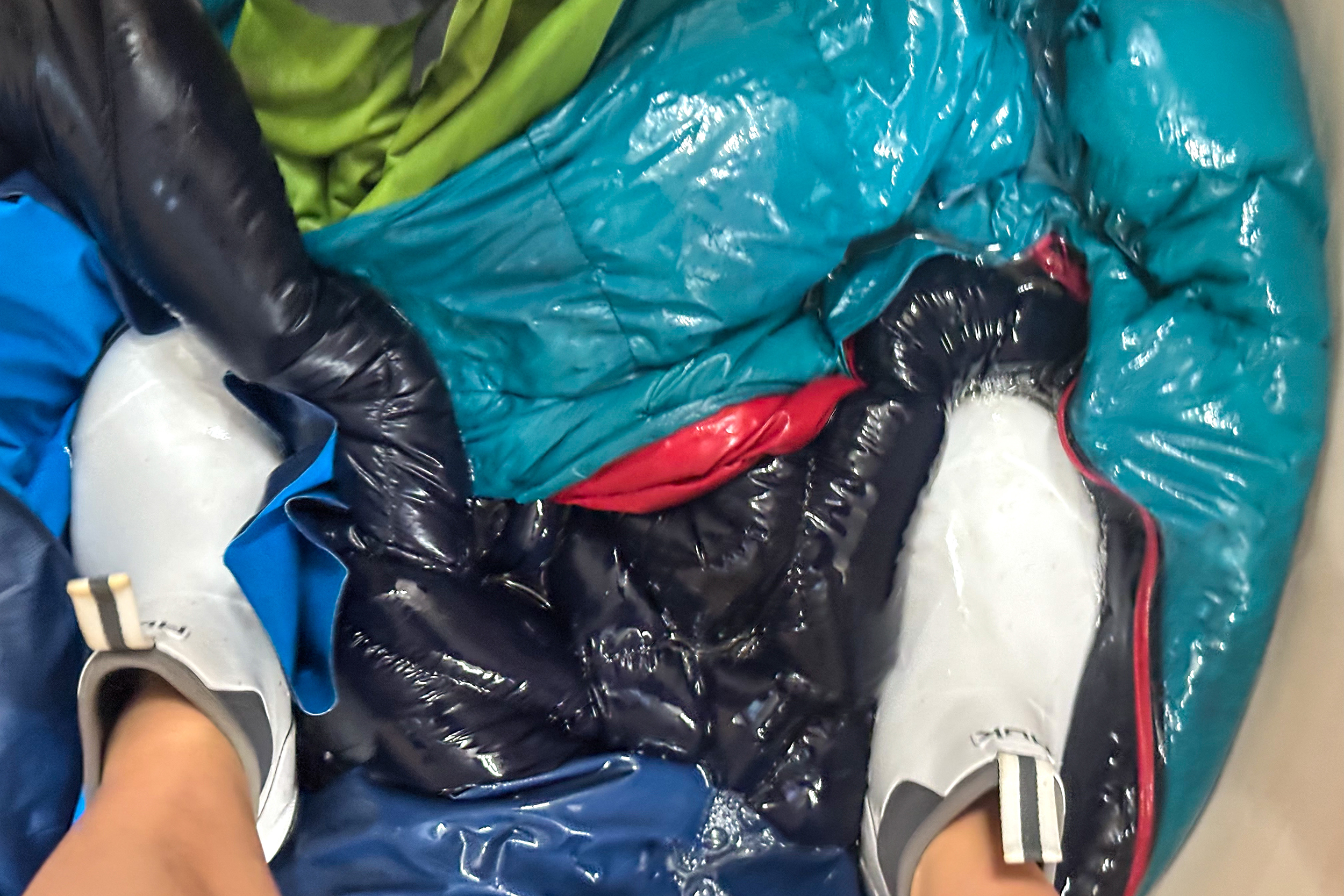
Getting the water out of the sleeping bag is harder than you might think. I chose the stomp and squish method.
Get your favorite pair of rubber boots. I highly recommend the Huk Rogue Wave Boots, but listen, any pair of Muck boots or XtraTuf boots will do. Now, climb into your tub and start squishing. This takes a considerable amount of effort and caution. I’m not saying that I fell once, but I’m also not not saying that. Be careful.
Once you get enough water out of the thing that you can lift it, I recommend slopping that puppy into a tote or laundry basket for the transfer directly into your washing machine.
Step 6: Rinse, Spin, and Drain Cycle

Do not put your bag into a top-loading machine with an agitator. It’s called an agitator because it will agitate your bag into pieces. This is one of those do as I say, not as I do moments. If you don’t have a front load machine, you should probably haul your bag to a laundromat.
Full Disclosure: I used a top-loader with an agitator. Again, do as I say, not as I do. Or do as I do. At this stage, all rules are out the window. This is your journey.
If your washing machine is a front loader and has settings that allow it to spin and drain out the water without going through a full cycle, do that first. That way, you’re getting all that moldy water whipped away before getting down to scrub business.
If not, oh well. Just wash the dang thing. Plop your drenched bag, pad, pillow, stuff sack, and any other treasures you may have had included into your machine and go.
Load your washer up with all the fixings: laundry soap, borax, laundry booster, and vinegar. I’ve read that Pine-Sol gets rid of mildew smells, but I haven’t taken that “piney fresh” leap yet.
Set that cycle to “ultra heavy soil” wash, maximum rinse, or maximum whatever other option you have. This is not the time to tread lightly.
Step 7: Dry
Conventional wisdom tells us to hang our sleeping bag in the great wide yonder to dry in the pristine mountain air. Bolder wisdom tells us to put it in the dryer on a low/gentle heat setting with tennis balls.
I slopped my bag directly into the dryer and set it to medium since I had no idea whether this was going to work or not, and I didn’t have time to wait around and be gentle.
Now, we wait.
Verdict

Well, here we are. I’ll admit I’m cautiously surprised with the outcome.
The sleeping pad looks and smells better now than it did when I bought it. It’s an absolute keeper.

The inflatable pillow? Well, it’s still dingy. You can still see where the mold was, and it doesn’t smell nearly as fresh. It was a $20 purchase that is now headed for anywhere but my head. It’s headed for burial.
The sleeping bag? The jury is still out. It looks good, but it smells … off. It doesn’t smell bad. I’m sure it smells better than it did before the mold incident, but it smells like laundry left in the washer just a few days too long and then rewashed, but not well enough.
It has that mildewy essence of a swimsuit that lived in a grocery bag in the backseat of a car for a week before being washed and reworn to a waterpark with really good hot dogs (hypothetically speaking). It isn’t strong, but it’s there, and I hate it.
I’ll be soaking this puppy in Pine-Sol and making every attempt to get rid of the smell, but for now, I don’t know if this will be successful.
Did I save the bag? Sure. Do I want to sleep in it? Not really.
HUGE UPDATE
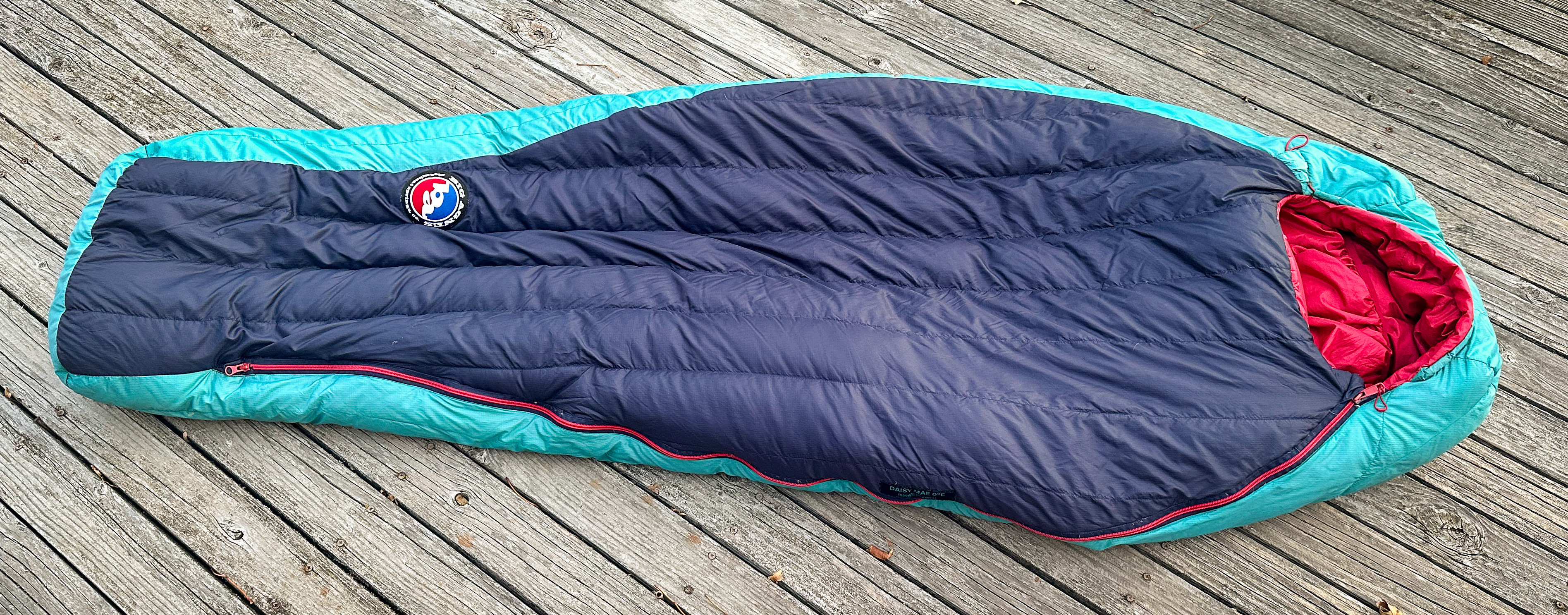
A Pine-Sol soak in a bucket overnight and an additional wash/dry brought complete success! My sleeping bag smells so clean. There seems to be no lingering aroma of mold or mildew, and I believe she’s been saved! There’s definitely a bit of fluff loss, but it’s a small price to pay.
WE DID IT.
I think this unfortunate turd is officially polished.
Bonus Step 9: Identify the Perp, Take Proper Action
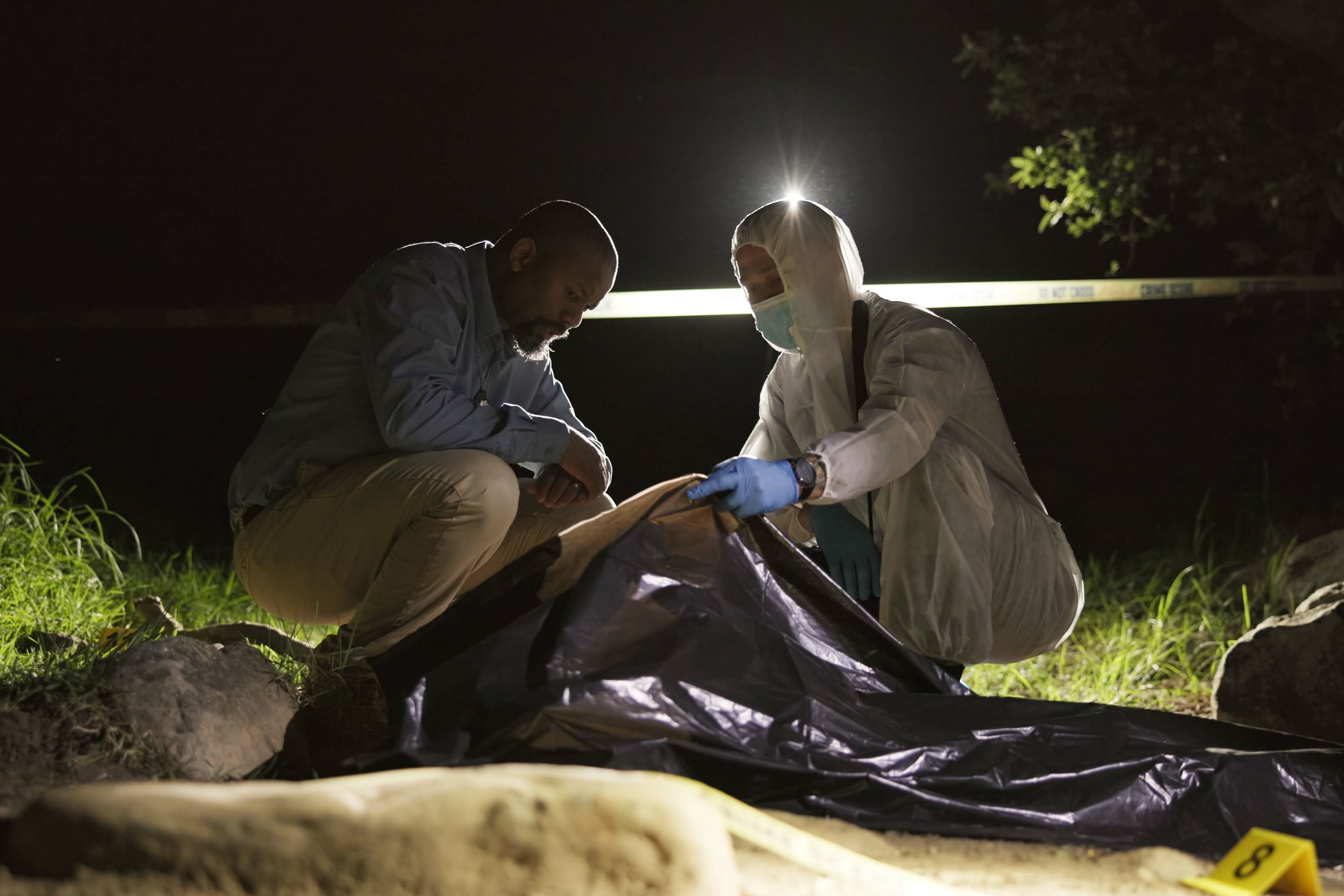
Now that you’ve either saved your bag or wasted valuable time and resources only to fail, it’s time to ensure this never happens again.
I haven’t been able to figure out who the last person who used my sleeping bag was. I’ve narrowed it down to women and children due to the size constraints of the bag. It could be one of my own offspring or possibly a member of my partner’s family.
Regardless, I’m currently researching whether or not the leftover borax will help me hide the evidence once I do identify them. (For legal reasons, this is a joke.)
